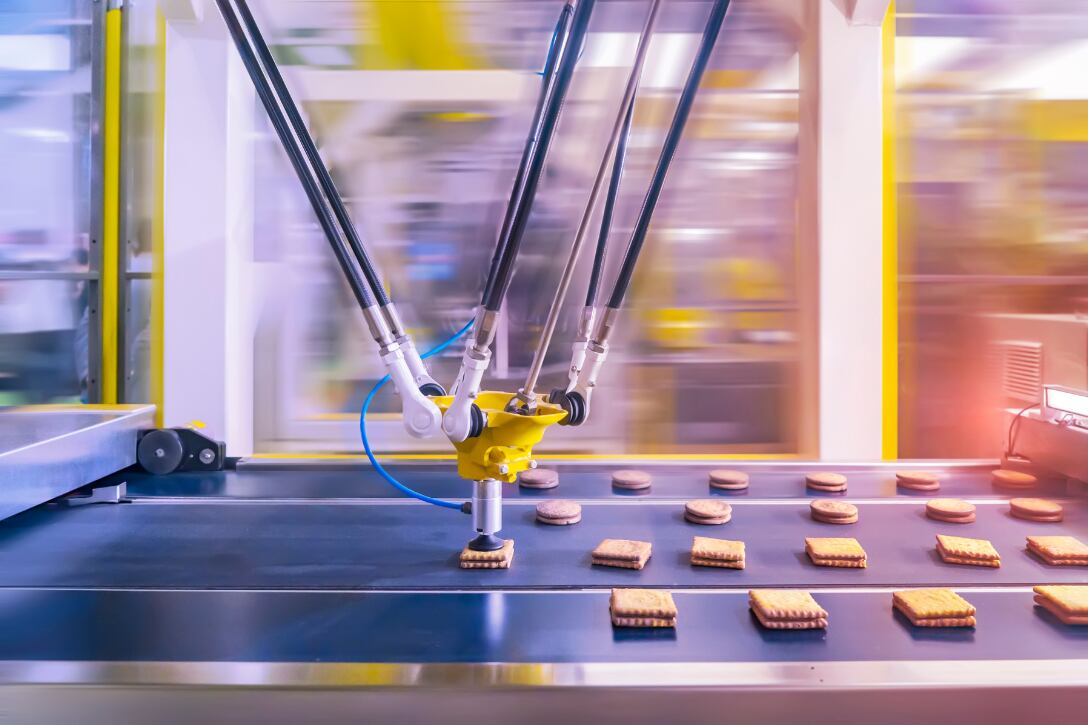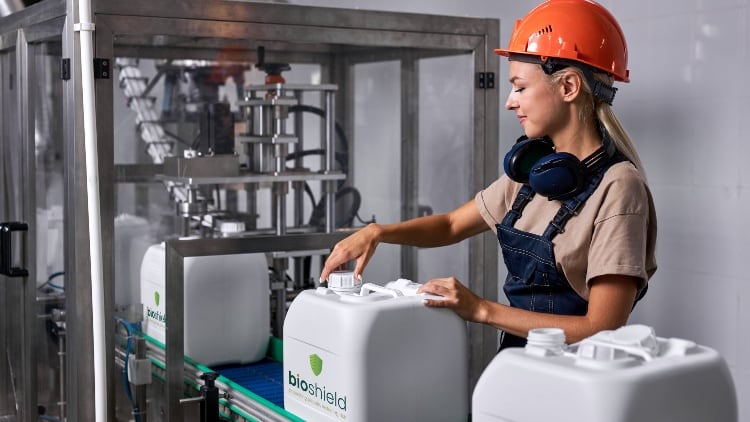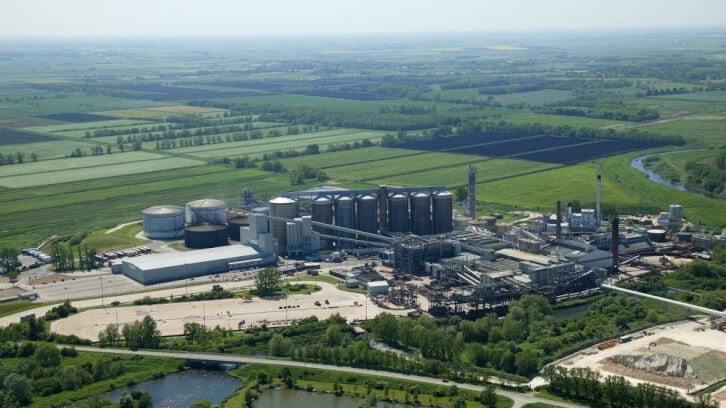While food safety, hygiene and cleaning may not be the most exciting topics for food and drink manufacturers, they are utterly critical for smooth sailing operations.
We all know why food safety is important – an incorrectly labelled product, an ill-prepared item, a case of cross contamination can literally put lives at risk – and we’ve seen the consequences on many occasions. Withdrawals and recalls, meanwhile, are costly and can lead to irreparable brand damage, while serious infractions can result in fines and even jail time.
Hygiene and cleaning are crucial to upholding food safety standards; and given that the industry is learning more about allergens and contamination all the time, it stands to reason that the way we think about these factors must continue to evolve.
A shift to sustainable cleaning products
Brent Stansfield is the director of sanitising solutions manufacturer Bioshield, a business that develops antibacterial and food safe solutions for the food manufacturing sector. Its purposely designed products, which utilise biotechnology expertise, and are made using natural components, offer a range of applications to food and drink producers of all sizes and setups.
Working with major retailers such as Tesco and Sainsbury’s, in addition to a number of supply chain and logistics solutions providers, Stansfield has noted a growing demand for sustainable cleaning products that do not compromise of efficacy. This includes a “big shift” towards natural solutions that are developed to reduce the environmental impact of sanitation throughout the food and drink supply chain.
“By combining natural bioflavonoids and organic acids with leftover pith and peel from the orange juice industry, we’ve created a highly effective and natural cleaning solution that drastically reduces virgin resource extraction and prevents excess waste, with no compromise in cleaning performance,” Stansfield told Food Manufacture.
Given that sustainability has become a focus across other areas of operation for food and drink manufacturers, including distribution, energy supply and ingredients sourcing, it is no surprise that it’s weaving its way into cleaning too.
“Companies are actively looking for ways to sanitise, protect and extend the life of ingredients, [but] without using traditional chemical-based food washes and preservatives,” explained Stansfield.
“To meet that trend, we have developed an organic approved and environmentally sustainable food wash to support the decontamination of poultry, fish, meat, fruit and vegetables (including fresh cut and open-structured produce).”
Stansfield explained that Bioshield food washes can extend a product’s shelf-life while also reducing the amount of potassium sorbate present. Potassium sorbate is a chemical additive that is widely used as a preservative in food and drink products such as cheese, ice cream, fruit juices and wine.
“Using a natural food wash like Bioshield's, companies can reduce or even eliminate the use of harsh chemicals and volatile organic compounds that can adversely affect human health,” he added.
Stansfield believes that concerns about the efficacy of sustainable and natural solutions have prevented food and drink manufacturers from making the switch in the past, given that they “simply cannot afford to compromise on cleanliness”. However, he believes that such a compromise no longer exists.
“The reality is that today, natural solutions can now offer comparable performance to traditional methods and products,” Stansfield said.
“[Our food wash] performs fantastically in terms of reducing Total Viral Count (TVC) and LOG – successfully delivering a 5-log reduction which is the equivalent of 99.99% reduction in bacteria.”
Continual innovation essential
While Stansfield claims that Bioshield has developed products that can be manufactured sustainably at the same time as offering high levels of protection, Colm O’Gorman, senior food and beverage consultant at Sagentia Innovation, noted that continued research into the development of sustainable cleaning solutions needs to become a bigger area of focus for the sector.
Sagentia Innovation is a research and development (R&D) consultancy firm with offices in London and Cambridge. It works with some of the world’s leading food and beverage brands, in addition to the medical, consumer and industrial sectors, offering product advisory and development services.
“Innovation in cleaning could play a valuable role enhancing manufacturers’ performance,” O’Gorman told Food Manufacture.
This is necessary, he added, because the food and drink industry is now “facing multiple challenges surrounding the heightened need for flexible and sustainable production”.
Four types of food contamination (and how to prevent them)

Ensuring the safety and quality of our food involves protecting it from four types of contamination: chemical, physical, microbial, and allergenic.
Food handlers and production facilities play a crucial role in preventing contamination and safeguarding consumers. Chemical contamination, like residues from cleaning products, can be avoided through proper washing and adherence to guidelines. Physical contamination, such as glass or plastic, is mitigated by inspecting raw materials and implementing quality control. Microbial contamination, caused by bacteria and viruses, is addressed through hygiene practices, thorough cooking, and pest control. Allergenic contamination is prevented by clear labelling, separate processing areas, and staff training.
Dycem's products, including floating mats with antimicrobial additives, provide peace of mind by minimising damage from contamination. Over 80% of contamination enters at the floor level – are you prepared for the challenge?
Website: www.dycem.com/products/cleanzone
O’Gorman explained that innovation in these areas may have been limited in the past because manufacturers have tended to place a greater level of emphasis on improving the green credentials of their core production processes.
He elaborated: “It’s often the integrating processes that surround [core processes] – cleaning or heating/cooling for example – which have a greater bearing on sustainability and flexibility. We expect this to be an innovation hotspot in the coming years.”
To give an example, O’Gorman referenced systems for cleaning in place (CIP). These automated systems are used to clean inside of pipes, vessels and other fittings used in the manufacturing setting without the need for disassembly and reassembly.
“Rethinking their design and operation could reveal ways to reduce the need for chemicals and cut water consumption,” O’Gorman said.
“Decreasing overall cleaning time is another potential innovation goal which could improve productivity, allow for greater product variation and support cost reduction strategies.”
For manufacturers, finding sustainability improvements in this area will largely be reliant on innovation and investment on the part of machinery providers, but it is an area of the process that deserves more focus, as food and drink firms search for ways to reduce their carbon footprint and resource usage.
Understanding allergens and PALs
Allergen control, much like sustainability, is another hot button topic that require robust systems. According to the Food Standards Agency (FSA), there are 14 allergens that need to be labelled on food and drink products sold and distributed in the UK, and failure to meet this requirement can land manufacturers and supply chain partners in serious legal trouble.
Dr Angela Baer, scientific and regulatory affairs consultant at Leatherhead Food Research, told Food Manufacture that due to the growing number of people with diagnosed allergies, controlling contamination has become “an important part of a comprehensive food safety management system”.
“Missed allergens can have serious consequences and once detected in a product, withdrawal or even recall will be triggered,” Dr Baer told Food Manufacture.
“Yet routes of allergen contamination can be very diverse and sometimes difficult to trace back.
She continued, “Cleaning and cleaning validation are important aspects of allergen control, as is ingredient segregation to prevent cross-contamination", before adding the following caveat, “Nevertheless, the unintentional presence of allergens cannot always be avoided”.
Whilst there have been strict rules around prepacked goods for some time, with allergens emphasised within the ingredients list, you will often see products with alibi statements.
Known widely as precautionary allergen labelling (PAL), the guidance on ‘may contain’ has been a topic of hot debate between producers, academics and allergen charities.
The FSA as recently introduced new guidance on PALs, worth noting it’s still not enforced by law, advising that such statements should only be offered once a thorough risk assessment has taken place and it’s been established the genuine risk of allergen cross contamination cannot be removed.
Dr Baer added: “The rationale for this is that excessive use of PAL can limit consumer choice and devalue allergen warnings. It’s also worth noting that Codex is currently developing new PAL guidelines and discussing a decision framework for its use.”
According to Leatherhead Food Research, regulators in China are considering making allergen labelling mandatory, while several other countries are weighing up whether they should update their existing mandatory allergen lists. Given the prevalence of allergens in many popular foods and the disastrous consequences of errors, food and drink businesses will need to keep a keen eye on how the regulatory process changes over time.
Utilising data
Data and analytics also serve as an important tool for food and drink businesses looking to optimise their hygiene and cleaning processes. Olam Food Ingredients (ofi), a global business that operates more than 110 manufacturing facilities in around 50 countries, said it employs an approach of continual improvement when it comes to food safety and that data and analytics is an increasingly central part of that strategy.
As Anoek van der Wal, head of EMENA food safety and quality at ofi, puts it: “The more data we can capture and analyse, the more effectively we can track and improve food quality. That’s why we’re working on ways to collect and organise our quality data more effectively across our operations.”
In the UK, for example, ofi has developed a new approach to cleaning the trucks that transport its cocoa butter because it recognised standards could be improved. Meanwhile, at its lab testing facility in Koog aan deZaan, the Netherlands, the group has introduced a laboratory information management system (LIMS) which involves its equipment capturing data directly and then feeding that back into other systems.
“This approach is more efficient, allowing us to trend food quality data and better data access for the cocoa ingredients we produce at the facility,” explained van der Wal.
Despite employing more than 20,000 worldwide, ofi said it has created an ethos of proactivity among its staff, empowering workers to explore potential improvements to how food safety is managed and monitored. This mindset is supported by the LIMS, as the technology grants operators the chance to act on deviations flagged proactively.
“Capturing the data in this way gives us better digital traceability of our ingredient processes, which is the key to success in managing our supply chain,” van der Wal continued.
Whatever data and analytics capability a food and drink business has access to right now, innovation in the areas of food safety, cleaning and hygiene is likely to involve similar technology moving forward. With more and better quality information, manufacturers can make improved decisions, and in the context of food safety, that is likely to translate into money saved and, more importantly, lives.
Enjoyed reading this? You may also like our exclusive analysis on how the Welsh Government is supporting food and drink manufacturers based in Wales.





